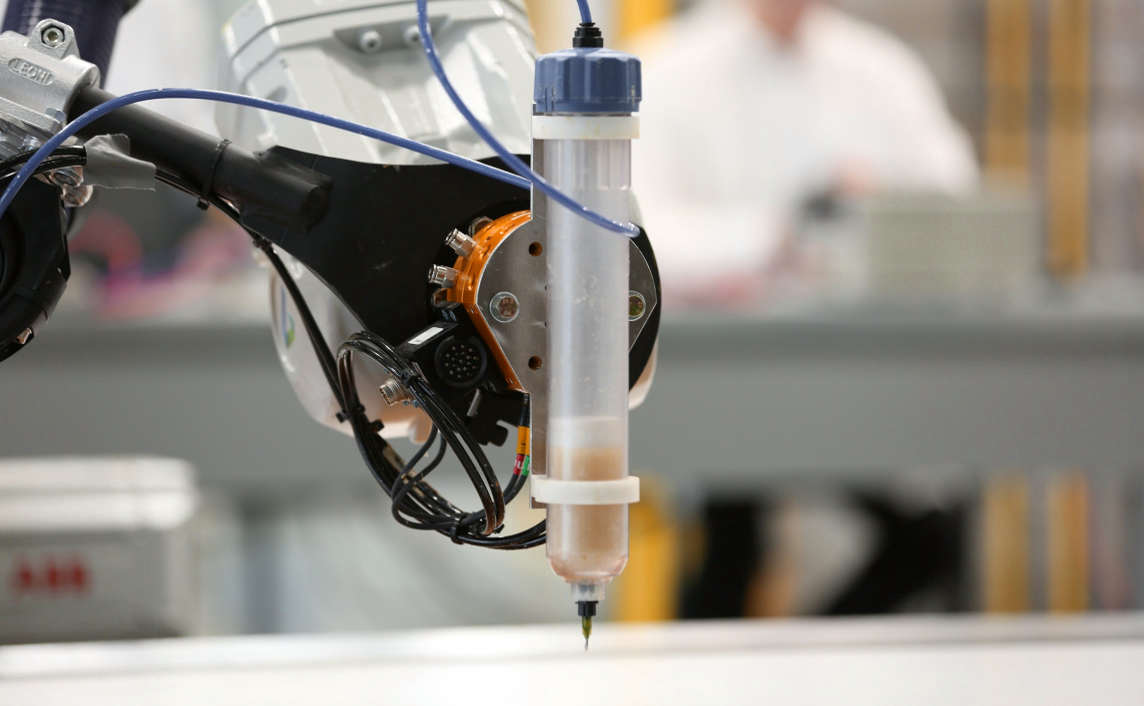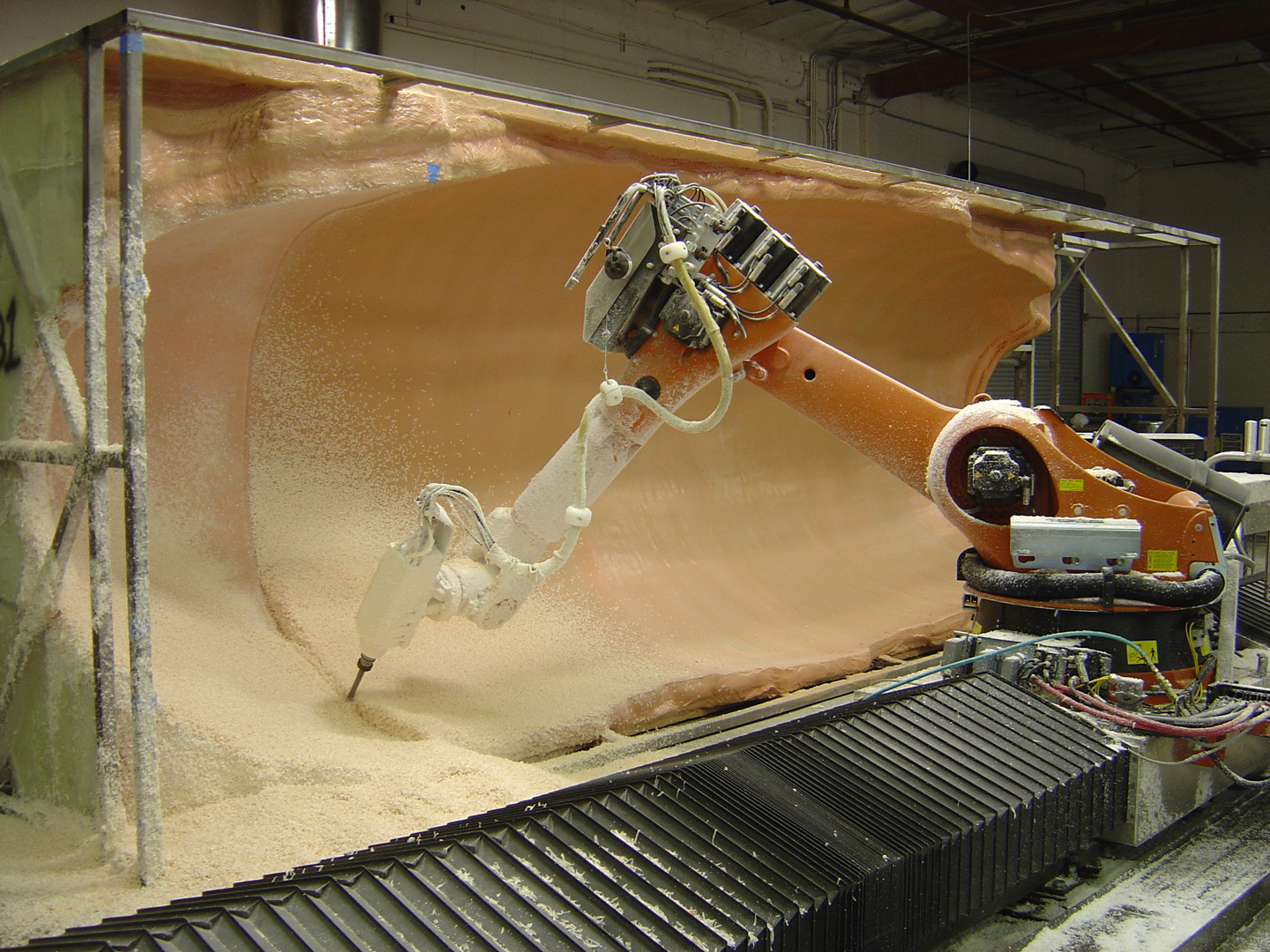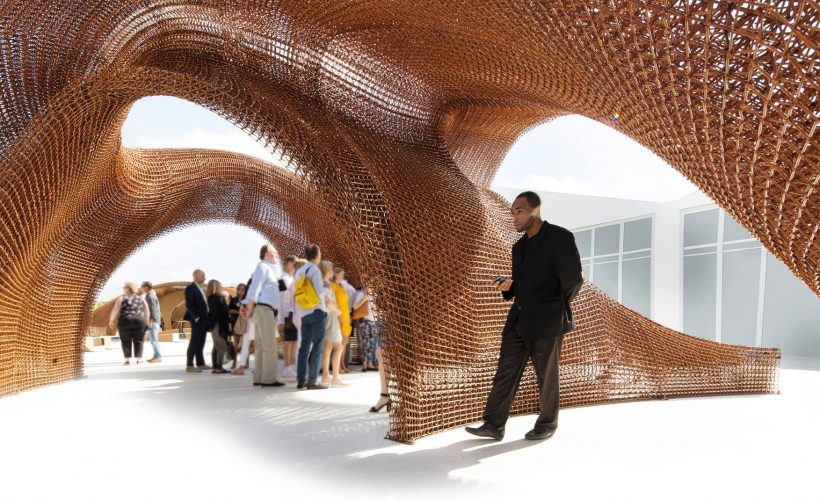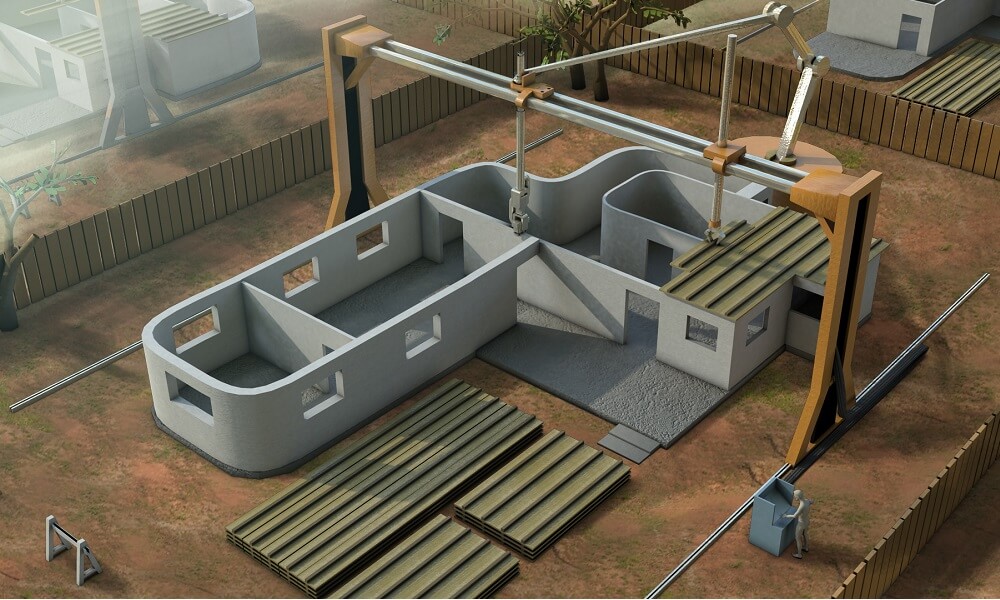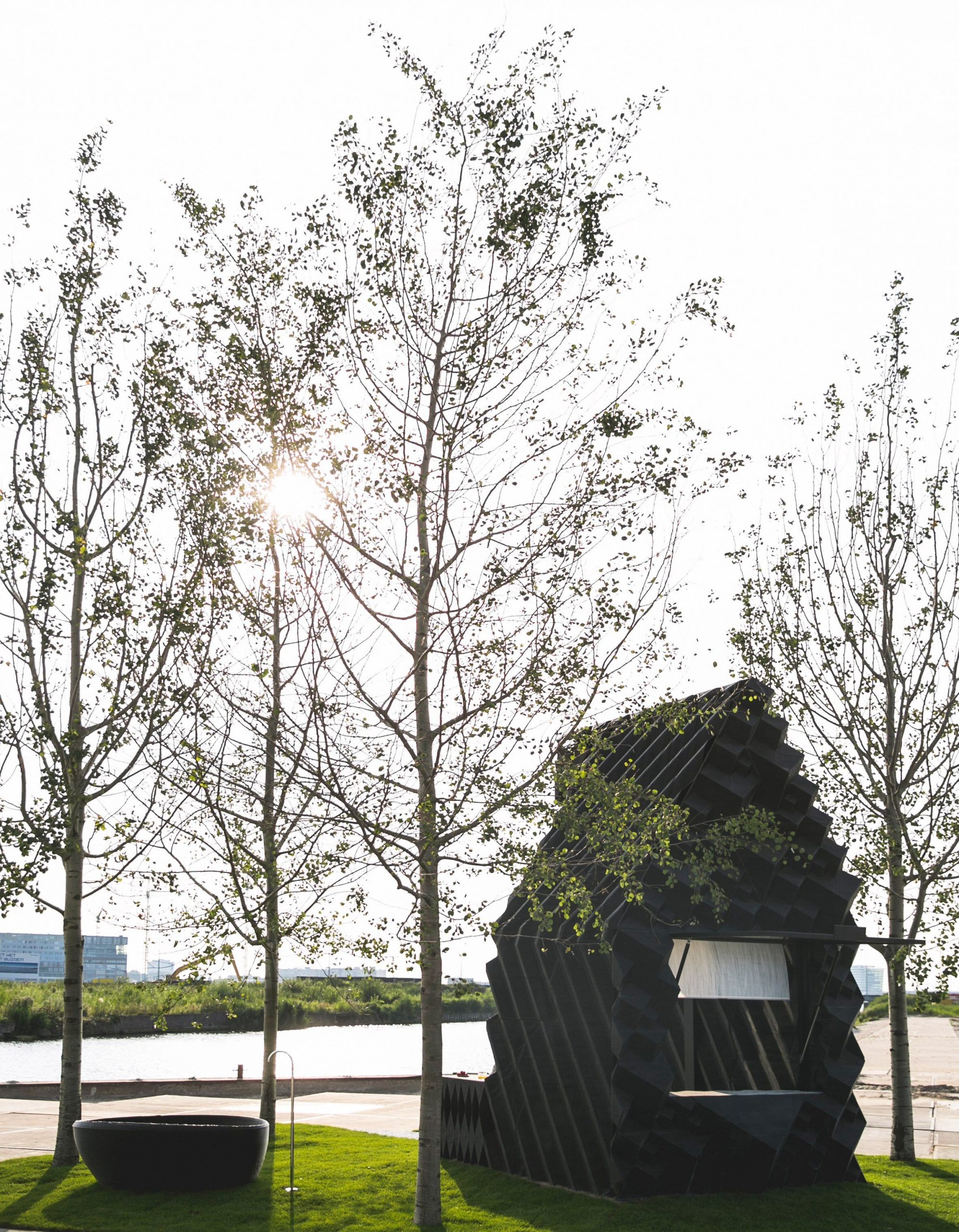Additive manufacturing (AM) is the industrial-grade term for 3D printing, and we are going to see how it has influenced modern architecture and has been influenced by it in return. AM is a term that encompasses all sorts of processes performed by 3D printing or, as it can be otherwise described, layer-to-layer construction. Additive architecture is done according to certain digital models called Computer-Aided Designs (CAD) or three-dimensional scans that can be translated into shapes, that we then divide into sections in order to be printed.
As a technology, additive manufacturing emerged in the 1980s as a technique of using stereolithography (SLA) to add layer upon layer of material to create a certain shape. In a nutshell, additive manufacturing is the process of shooting an ultraviolet laser beam into a mass of photopolymer which turns into solid plastic. There is a range of other materials, that are not photopolymer, that we currently use in additive manufacturing such as clay, glass, metals, and nanocomposites.
Additive manufacturing comes in many shapes
There are six processes of additive manufacturing that we are going to talk about today:
- VAT Photopolymerisation is a process that’s used with plastics and polymers and it consists of layering liquid photopolymer resin while hardening it with ultraviolet rays into plastic.
- Sheet Lamination is a method of AM that uses plastics, paper, and metal sheets and joins them through ultrasound welding or adhesive and then cuts through the material layer-by-layer. Throughout the process of ultrasonic welding, the molecules of the materials melt and solidify together, then the excess material can be removed and we are left with the final product.
- Directed Energy Deposition (DED) is the process of depositing molten material onto a platform and then solidifying it with a laser or electron beam, and unlike simple layering, here the nozzle that deposits the material has the freedom of movement to reach different angles and positions. Metal is the primary material used in this process.
- Powder Bed Fusion is usually used with polymers, metals, and other dust-based materials and in this case, the robotic arms deposit a thin layer of material dust, melts it, and then fuses it together using a laser or electron beam. Like the other methods mentioned before, the remains of the dust that are leftover from the process are removed at the end of it.
- Binder Jetting is when the AM system deposits liquid biner to combine layers of material with dust particles such as ceramic, metals, or sand. The process starts with the first layer which is then allowed to cool, followed by repeating the same process until the design is complete.
- And, finally, Material Jetting that’s basically when UV-solidified photopolymers are used along with a liquid mixture of the building material that the system drips on the platform to create the shape of the element.
Additive Architecture and The Construction Industry
One upside of using additive manufacturing is the fact that the process is heavily controlled and leads to virtually no waste, meaning that it an environmentally conscious approach to construction. AM depends on the use of precise quantities of material and exact geometrics, all of which lead to preserving resources and saving time and costs. Another point is that AM leaves no room for error while constructing the design, which leads to better time management and the swift, smooth execution of designs. The use of additive manufacturing goes all the way from creating replicas of archaeological objects to industrial design to the manufacture of human organs and tissues.
Additive Architecture Projects
You’ve definitely come across 3D printed models of living spaces, and although they look brilliant in theory, bringing them into reality is going to be one pricey process. However, this didn’t stop many designers and architects from pursuing their dreams of using additive manufacturing in order to create light, stable, and mighty edifices. Because of many projects that had recently seen the light, additive architecture is establishing itself as one of the most progressive methods of fabrication in the building industry.
It is almost unbelievable that the capabilities of additive manufacturing went beyond 3D printing miniatures and into printing entire architectural structures. Some recent projects actually revealed that robotic arms can even print and construct themselves. The spectrum of the projects that integrate additive manufacturing with architecture starts from building infrastructures to interior decorations.
Here we are going to look at two of the projects that took additive manufacturing to a completely new level, exhibiting the unlimited potential of digital fabrication.
Contour Crafting
3D printing has been evolving rapidly that now there are researches specifically dedicated to applying it on an industrial scale. A spectacular method of using additive manufacturing to layer buildings has been tested in the construction sector, dubbed Contour Crafting. This method of AM is to be one of the things that will set off a revolution in the architecture scene, as soon as the technology started being used on a larger scale.
This method of additive architecture has been researched by Dr. Behrokh Khoshnevis at the University of Southern California’s Information Sciences Institute, who built a machine that’s able to construct entire homes using this technology. The theory is that we’d need a big construction 3D printer that will print out and layer any type of infrastructure, even ones using concrete or sand.
The 3D Print Urban Cabin | DUS Architects
This Amsterdam-based project was designed by Dutch studio DUS Architects. DUS Architects choose 3D printing as their method of construction for a specific reason: to show that it is the best construction technique for temporary housing and disaster relief. Not only were additive architecture techniques used to construct the design but also a completely environmentally-conscious approach. The cabin was completely printed using bioplastic materials, and when there is no more use for it, it can be easily taken down (disassembled) and the materials will be reused for printing another building.


